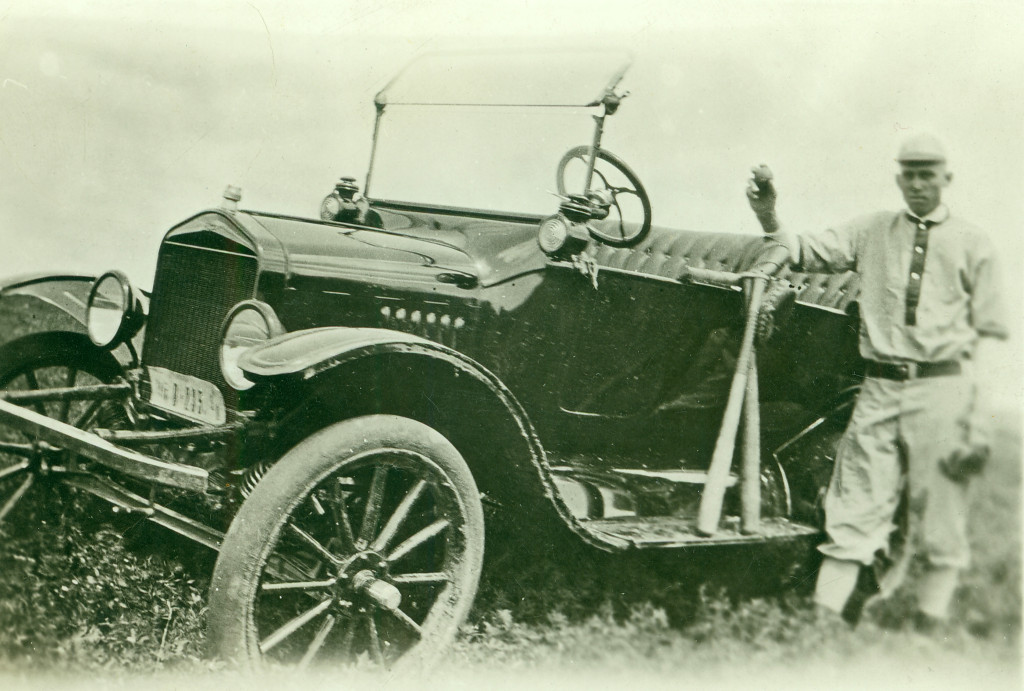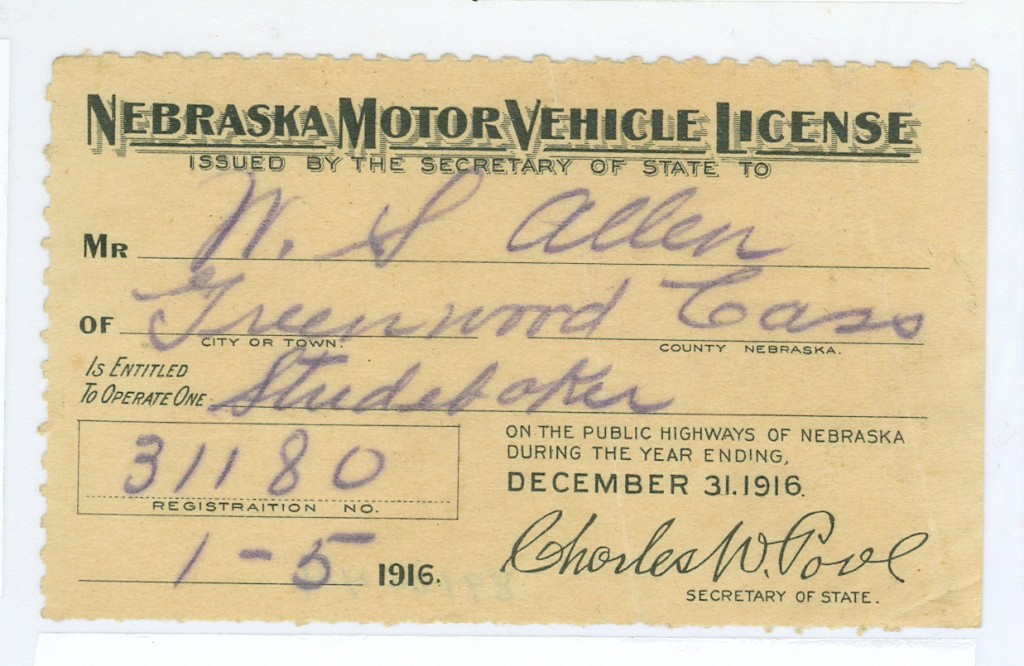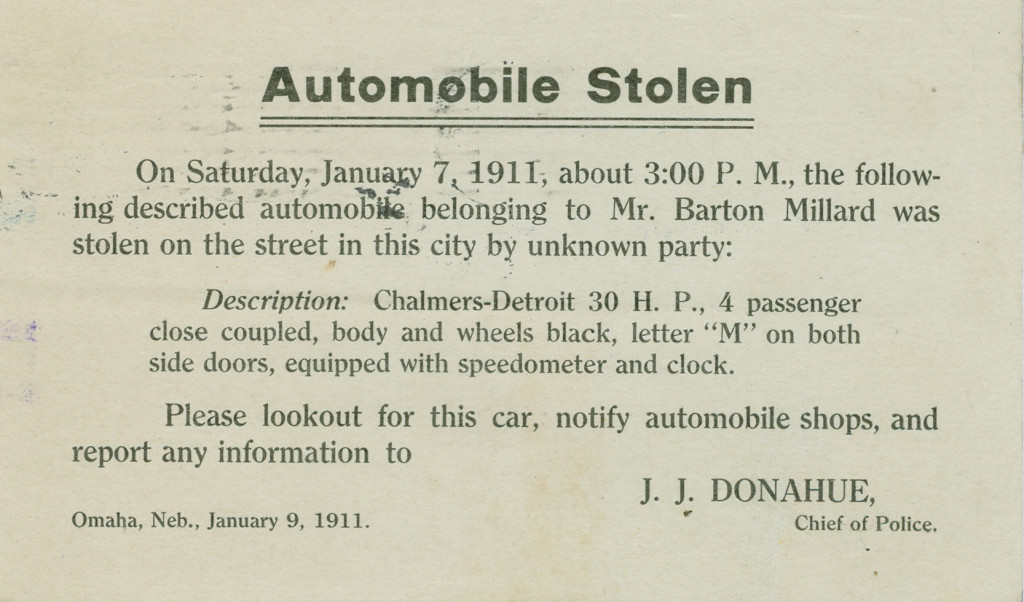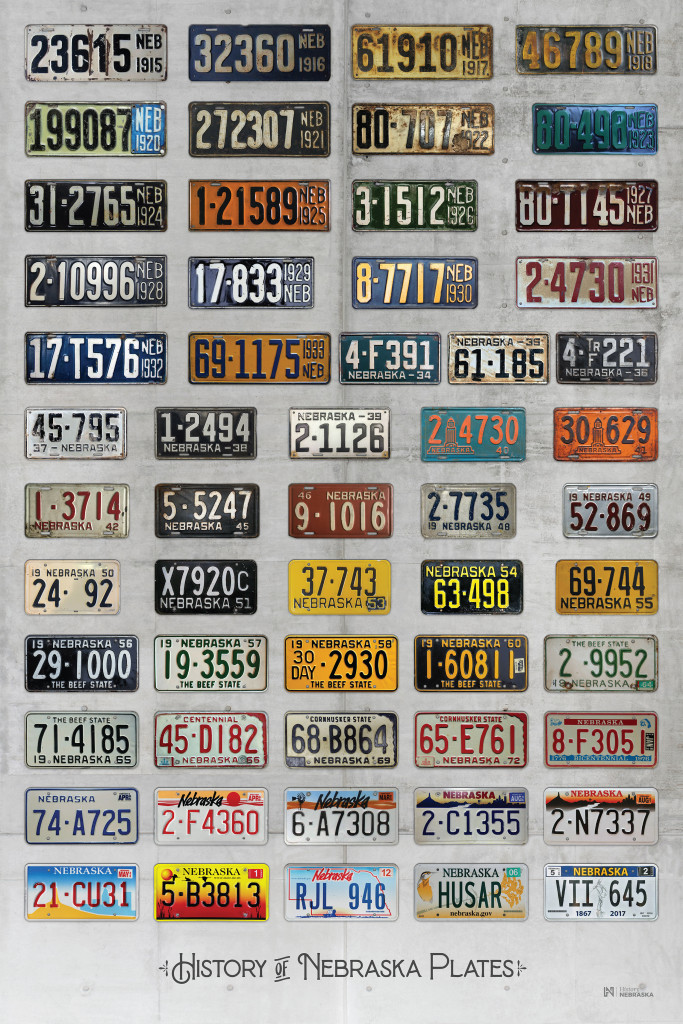
By David L. Bristow, History Nebraska
You drive your shiny new car home from the dealership and park it out front where your jealous neighbors can see it. Now, it’s time to make the license plate.
That’s what Nebraska motorists did for 10 years in the early 20th century. The state began registering automobiles in 1905, but didn’t manufacture license plates until 1915. In the meantime, the Secretary of State’s office registered cars and issued numbers. Owners made their own plates by attaching metal numbers to a piece of leather.

Thanks to History Nebraska’s Government Records collection, which preserves the state’s early auto license records, we know who made the license plate shown above. John A. Reuling of Wymore had this number from 1911 to 1915 for his 30-horsepower Halladay auto. Reuling was a local jeweler, and later a bank president, who was elected mayor while he owned the car.
It’s no surprise that the car belonged to one of the wealthier citizens. Auto ownership was still expensive and exclusive, but the mass-produced Ford Model T was starting to change that.

Like license plates, early driver’s licenses were simple. It took many years for the driver’s license to take on its current role as a universal form of identification. The 1916 license shown above was a “Motor Vehicle License” that was issued annually and functioned both as a driver’s license and proof of registration.
By 1930, Nebraska was one of 24 states that required a driver’s license. (Neighboring South Dakota didn’t issue driver’s licenses until 1954.) The 1930 license shown above was issued to a Burwell woman. It had no photo and a physical description that focused only on skin color. On the back was a form for a driver’s previous violations, a handy feature before law enforcement officers could easily access a database. To protect the non-laminated license, it came in an envelope with a little window.

Not only were licensing and registration more primitive in the early days, so were the methods to recover stolen cars. The postcard shown above was printed for the Omaha chief of police and mailed to county sheriffs across the region. This one was addressed simply to “Sheriff, Falls City Neb.” We don’t know if Mr. Millard ever got his car back.
Read more stories by searching “automobile” at History Nebraska’s website, history.nebraska.gov.

